Tomb Raider Review
 Unlike a lot of male gamers who grew up in the 90’s and early 2000’s, I’ve never really understood the appeal of the Tomb Raider series. Granted, the only one I really played more than an hour of was Tomb Raider: Legend on my PSP, which I found that to be mediocre at best and downright frustrating at worst; the rest of the series seemed to me to be nothing more than eye candy for horny teenagers guised in a thin veil of an adventure game. I’ve never even understood why everybody ogled over Lara Croft so much, other than the obvious fact that she was created primarily as a video game sex symbol. Beyond this though, you often hear gamers talking about how awesome of a character Lara is, even though, from my perspective, she has always a “Mary Sue” who is perfect in every way, and completely dull all around.
Unlike a lot of male gamers who grew up in the 90’s and early 2000’s, I’ve never really understood the appeal of the Tomb Raider series. Granted, the only one I really played more than an hour of was Tomb Raider: Legend on my PSP, which I found that to be mediocre at best and downright frustrating at worst; the rest of the series seemed to me to be nothing more than eye candy for horny teenagers guised in a thin veil of an adventure game. I’ve never even understood why everybody ogled over Lara Croft so much, other than the obvious fact that she was created primarily as a video game sex symbol. Beyond this though, you often hear gamers talking about how awesome of a character Lara is, even though, from my perspective, she has always a “Mary Sue” who is perfect in every way, and completely dull all around.
I’ve even heard people praise Lara for being a “strong female character”, even though she’s probably done more to harm the depiction of female game characters and, by extension, gaming as a whole than any other female lead. Like I touched on before, I have little experience with past Tomb Raider games, so my opinion may be completely unjust, but either way this the image of Lara Croft that has been conveyed to the masses not only by the media, but by the game’s own marketing strategies. So, that said, is Tomb Raider any good? Does this reboot take the series in a new direction? Is Lara Croft finally a character with some substance, rather than just a pair of butt-kicking breasts? Well, allow me to answer these questions with an emphatic YES!
I’ll start off by saying that when I first heard Crystal Dynamics would be rebooting the stale Tomb Raider series, I was cautiously optimistic. For all of the harsh words I’ve said about Lara Croft as a character, I’ve actually seen a lot of potential for her to become a strong female lead, and with this new reboot I can finally say that Lara has become not only one of the best female video game characters ever, but one of the best game characters of any sex or gender. Rather than being a flawless Mary-Sue, her flaws are laid out for the world to see; she has her weaknesses, she has her limits, and she actually feels like a human being rather than a robotic analogue. As the story progresses and Lara endures more hardships, her personality undergoes quite the metamorphoses, transforming her from a sort of traveling scholar who relies on the strength of others, to a full-fledged survivor and adventurer that has gradually discovered strength within herself.
Beyond this, the developers managed craft her personality in such a way as to show just how strong and determined she is, without falling in to the oft sprung trap of giving her traits that are more commonly associated with masculinity. It’s incredibly refreshing to finally play as a strong female character that doesn’t have a stereotypical male persona or is devoid of personality entirely. I absolutely adore the way in which the developers managed to give Lara the strength needed to accomplish her goals, without sacrificing any of her femininity.
Of course, having a strong protagonist doesn’t automatically equate to a good game, but I can honestly say that Crystal Dynamics has hit this one out of the park. The story opens with Lara on an expedition to find the lost island kingdom of Yamatai which is said to have been ruled by a Sun Queen who could control the weather. During a particularly fierce storm, her ship is torn apart and she is separated from her shipmates. Lara makes her way to a nearby island and begins to search for the ship’s crew. However, things are never that easy and turn downright dangerous when a Sun Queen-worshipping cult called the Solarii begin kidnapping and killing Lara’s friends.
When Lara is alone, the story is spectacular, well executed, and has great pacing and story progression. We clearly see the multitude of conflicts on display as you progress through the game, and furthermore we see the effect each has upon Lara; there is one scene towards the end of the game where you come across a mirror and you watch as Lara stares at herself for a moment. In her eyes you can clearly see that she isn’t the same person who arrived on the island. The old fiction writer’s adage of “if you love your characters, put them through hell” was taken into great account; we see and feel each injury, each near death experience, and each of them appeals greatly to our own base fears. This leads to an unbelievable amount of immersion that causes you to project your own consciousness into Lara; as such, you develop a deeper understanding of who she is, why she is fighting, and how she becomes so strong.
Conversely to this, the other characters are pretty bland, which unfortunately leaves a few gaping holes in an otherwise decent story. For one, all of the other characters are your typical cookie-cutter archetypes with zero character development and no depth; though I will laud the developer’s attempt at a racially diverse cast, even if these characters do fall short. This is too bad because it detracts from the relationship between Lara and the player; you’re never able to empathize with anyone else and as such, can never truly understand the ferocity in which Lara fights for them, aside from her internal conflict about being the one who led them on the failed expedition. Thinking more critically on the matter though, this poor character interaction may actually work in Tomb Raider’s favor. Since one of the main themes of the narrative is relying solely on yourself and your instincts; having the other characters be more fleshed out and fully realized might actually detract from the disconnect towards other people that grows within Lara as her character evolves.
Another thing that annoyed me with Tomb Raider’s story is that it continuously uses the trope of having the characters split up for some obligatory reason. There’s a point near the beginning of the game where almost all of the characters are reunited, but then they decide to break off into groups for a reason I honestly can’t remember. If you and a bunch of other people were stranded on an unfamiliar island, would you make the conscious decision to split up? I didn’t think so.
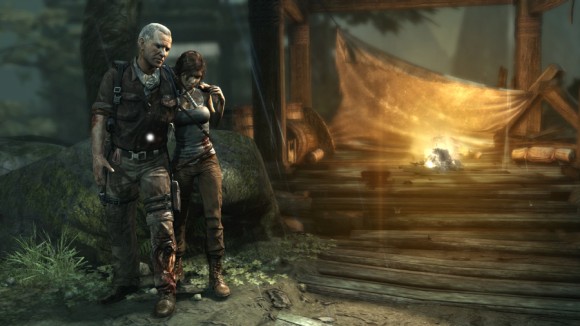
So, I was thinking. How ’bout you go climb up that mountain to look for the others, and I’ll stay back here and eat chips. That’s fair, right?
Gameplay wise, Tomb Raider is similar to the Uncharted series in that it has you swapping between climbing/puzzle solving, and third-person shooting. One of the aspects of the game I was most excited about was the idea of surviving in the wilderness. Unfortunately, this didn’t play as big of a role as I had initially thought it would, and the game turned out to be more of an action epic, than a survival game. Tomb Raider has you climbing cliff faces and ancient ruins like you’d expect, but it also has you exploiting your surroundings to take out your enemies and traverse the island. Climbing around jumping from ledge to ledge has never been more fun and varied, and using your climbing axe to work your way up the face of a rock is strangely satisfying and never dull.
Combat feels very natural and is rarely frustrating. Technically, you only have four weapons to choose from when dispatching your enemies: five if you count the climbing axe. Among these are a bow, a pistol, a machine gun, and a shotgun. Each weapon has various upgrades that increase its damage, reload speed, firing rate, and more; you can upgrade your weapons by collecting, and subsequently spending, “salvage” from special boxes scattered around each level, or from enemy and animal corpses after you have unlocked a certain skill; you can also find weapon parts to increase their stats even more. After a while, your arsenal begins to serve other purposes than just killing people and animals. For example, the shotgun can bust through some debris to allow you to pass by; the bow has a rope arrow feature that can be used to string up zip lines, latch onto rope covered objects from a distance so you can pull them towards you, or even open certain doors. These secondary uses for your weaponry give the game a sort of “metroidvania” feel that is always welcome in my opinion.
Killing an enemy or animal, finding a hidden item, or reaching a certain point in the game yields experience points which eventually add up to a skill point that you can spend on a skill in one of three categories: hunter, survivor, or brawler. These skills allow you to do different things such as the ability to collect salvage from fallen enemies, increase your maximum ammo capacity, allow you to attack with your climbing axe, etc. Apart from the aforementioned methods, you can also gain XP and salvage by completing a multitude of side challenges; completing these challenges is completely optional, unless you want to finish the game with all your skills and weapons maxed out. Apart from the main story or the challenges therein, there are also tombs in which you can explore to find more XP, salvage, and weapon parts. These tombs are basically just a separate room with a puzzle to solve; I guess the developers thought the main game was too devoid of puzzles, which admittedly is true, though that’s not necessarily a bad thing.
The subject of violence is approached in a careful, yet effective way and I have to give huge props to Crystal Dynamics for not pulling any punches. The violence in Tomb Raider is mostly born from how many people you have to kill, however, unlike previous entries in the series, you get a sense of the effects that the act of ending this many lives has on Lara’s psyche. The first time she has to kill someone, she becomes distraught and sick to the point of almost throwing-up, but after a while she becomes desensitized to the act of killing, and even comments on how frighteningly easy it actually is. I was also worried that because Lara is a woman, the developers might feel obligated to omit any violent acts done to her which, in my opinion, would be quite sexist. There’s one scene in particular where a group of men beat the crap out of her; taken out of context, this could easily be seen as a male dominance fantasy, but when you take a more intellectual look and don’t jump to conclusions, you can see that this isn’t the case. Think about it, by this point in the game Lara has killed at least 50 of these men’s fellow cult members, and was just about to kill all of them until she was forced to drop her weapons at the threat of her friend being killed. The fact that she’s a woman has nothing to do with the scene in question, and I applaud the tactful way in which it was executed.
The death animations are particularly brutal, and at first seem somewhat out of place with the overall tone of the game. However, I think this was a good design choice on the part of the developers because it depicts a more realistic, albeit gruesome, fate that could potentially happen to someone in a survival situation. Unlike a lot of M rated games, Tomb Raider isn’t really all that violent in terms of blood and gore or killing in a grizzly fashion, but rather it has instances that are far less “cartoony” and much more likely to happen in real life. I can witness people getting chainsawed in half in Gears of War and not bat an eyelash due to how unrealistic is, but when I mess up and see Lara getting impaled through the skull from under chin to crown of head, I can actually feel it.
Aesthetically, Tomb Raider simply looks fantastic and was clearly created with painstaking detail. Aside from collectables, nothing looks deliberately placed; rather, the game has a very organic feel that is furthered by the exemplary visuals and highly polished graphics. Issues such as screen tearing, visual artifacts, lighting/shading issues, clipping, and texture pop-in are few and far between, so it’s clear that Crystal Dynamics put a lot of love and effort into this project.
The opening gameplay sequence is very fast paced and exhilarating, to the point that afterwards I actually felt my heart beating faster than normal, and even felt short of breath. This is a perfect way to draw players into the game while giving them only a fraction of the truly epic and adrenaline packed moments that are to come, as well as setting up the exasperating crescendo of an ending that is quite satisfying and will leave you with a sense that you had just finished an amazing adventure; mostly because you have.
The only real downside to Tomb Raider is the cutscenes. While they aren’t terrible, they do clash heavily with the gameplay sections in that they are very mechanical and forced compared to the fluid nature of the gameplay, and as such, the resulting transition between the two is quite jarring.
Tomb Raider’s already glimmering coat of polish is further waxed by a slew of great design choices and game mechanics. One of these is an ability called “Survivor Instinct” that allows you to see important items and key parts of your surroundings. This is very useful if you get stuck in an area and cannot discern where to go, or you are just on the lookout for items of interest and enemies. It’s also nice that you can fast travel between different campsites so you can go back and collect items that you may have missed or could not acquire when you were initially there. The interface of the game is very simple and clean, with no unnecessary distractions; I always like games that don’t have a HUD present to obstruct the screen. All of this is wrapped up with controls that feel both precise and natural, and give the game a sense of fluidity that few others have achieved.
I’ll just go on record and say that I absolutely adore Tomb Raider. This is by far the best entry in the series, and is easily my favorite game so far this year; sorry Ni No Kuni. There are a handful of flaws that prevent this from being a true masterpiece, but certainly not enough to detract from the overall enjoyment that is to be had. Lara Croft is finally a truly great character, female or otherwise, and has now raised the bar of video game character development that other developers will be hard pressed to overcome. Here’s to hoping Crystal Dynamics can further refine this new formula, and come up with new and interesting ways in which to explore Lara Croft’s character.
Final Rating:
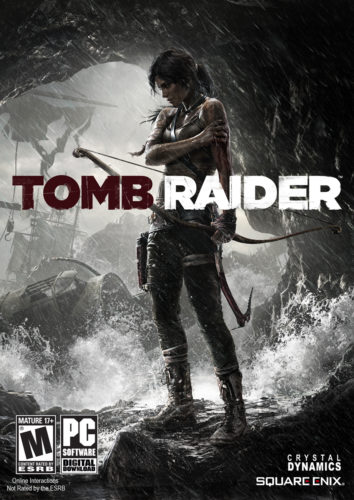
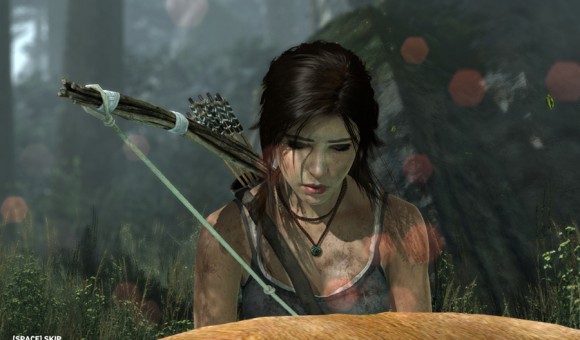
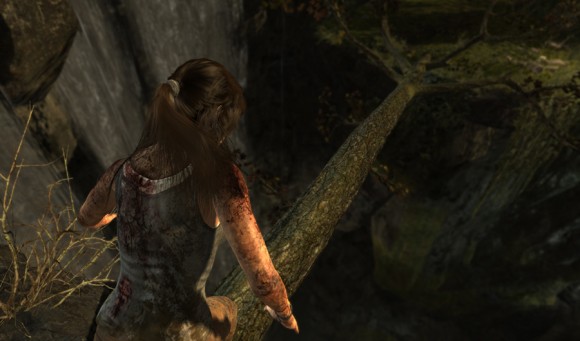
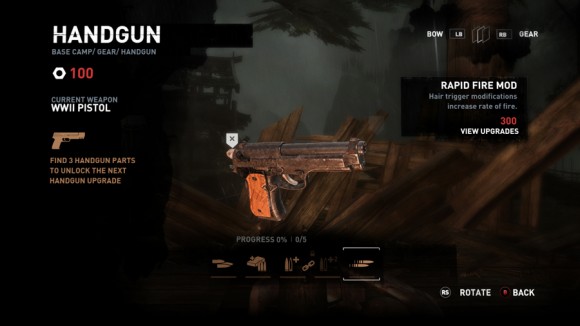
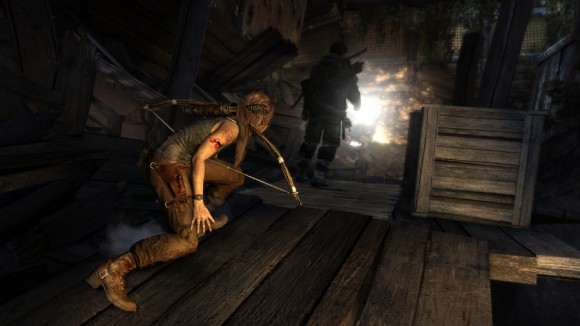
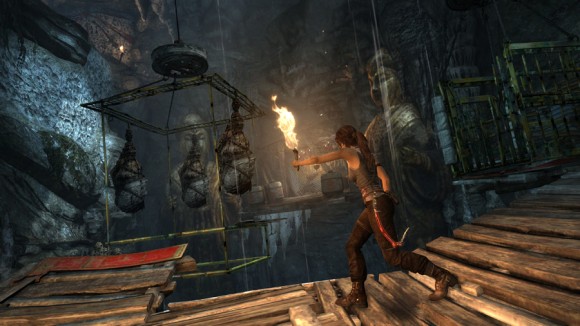













1 comment